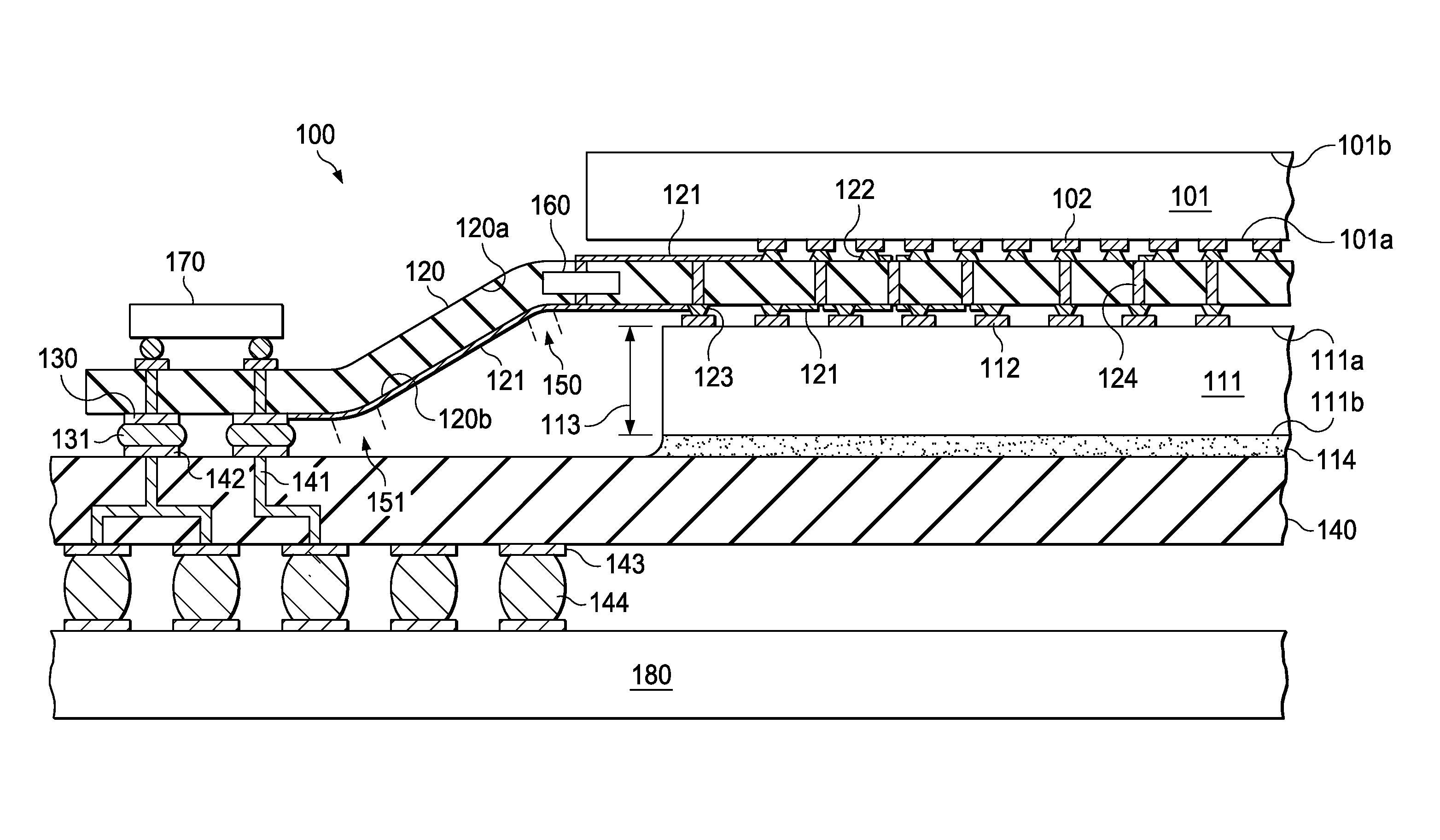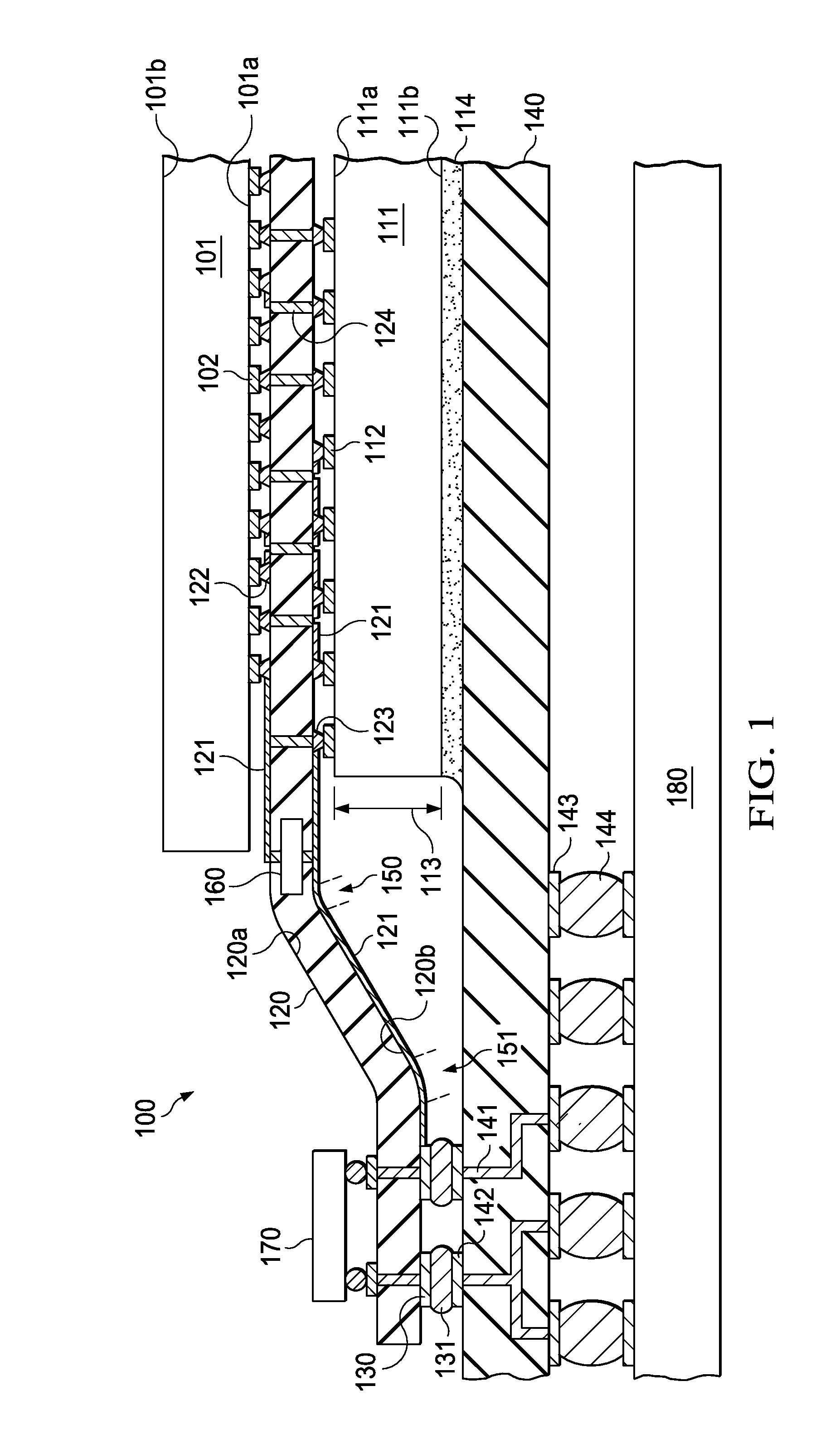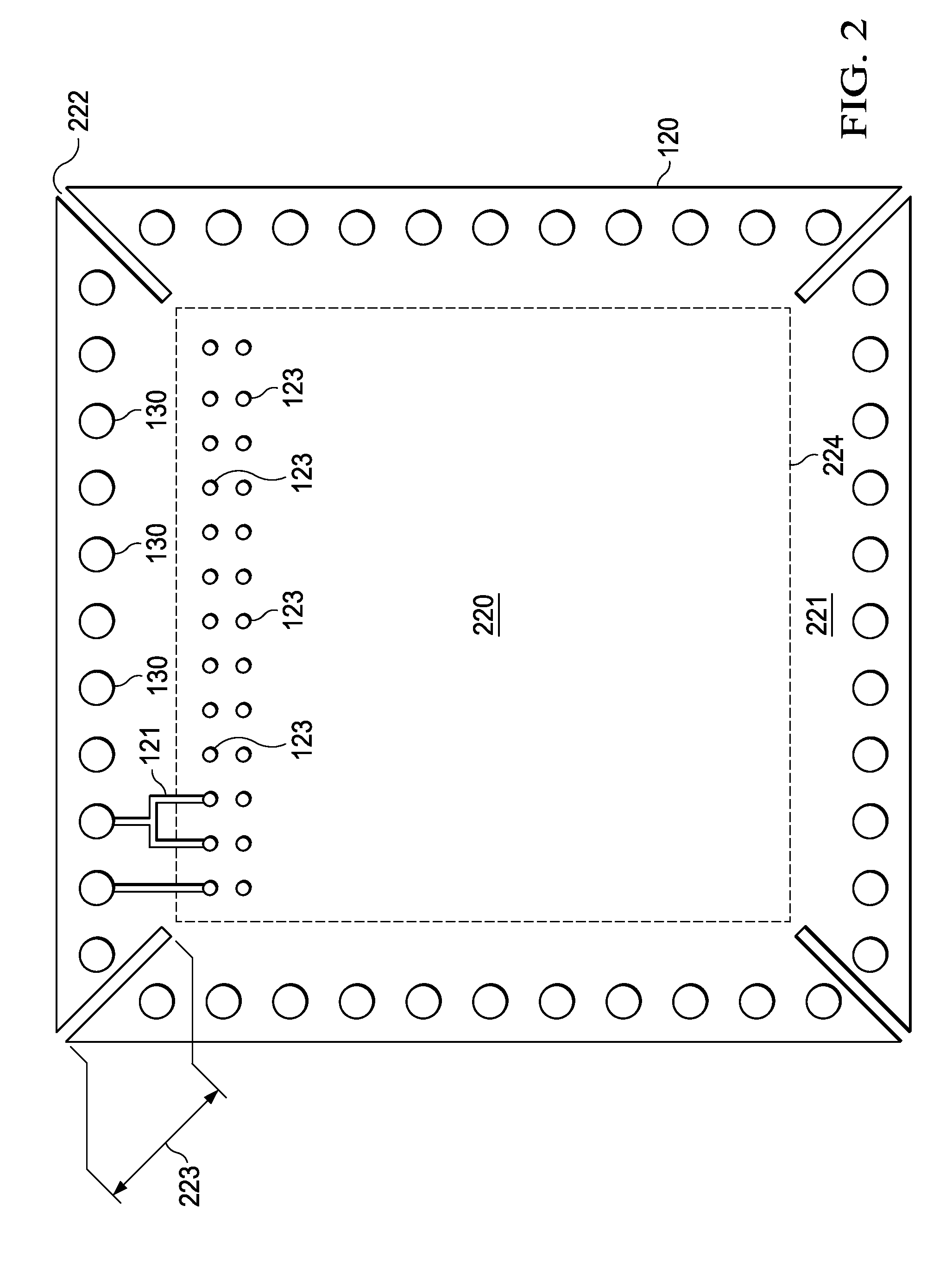Flexible Interposer for Stacking Semiconductor Chips and Connecting Same to Substrate
a technology of interposer and semiconductor chip, which is applied in the direction of solid-state devices, printed circuit aspects, basic electric elements, etc., can solve the problems of high failure rate, high cost, and limited number of connections of high-aspect ratio posts, and achieves reduced stress on contact joints, increased input/output, and reduced failure rate
- Summary
- Abstract
- Description
- Claims
- Application Information
AI Technical Summary
Benefits of technology
Problems solved by technology
Method used
Image
Examples
Embodiment Construction
[0016]An embodiment of the invention is illustrated by the portion of a semiconductor device, generally designated 100, depicted in FIG. 1. Device 100 has a first semiconductor chip 101 and a second semiconductor chip 111. Chip 101 has a surface 101a with transistors or other integrated circuit components, and with terminals 102 in first locations; further, chip 101 has a surface 101b without transistors. For brevity, a surface with transistors is called herein an “active” surface, and a surface without transistors a “passive” surface. Both surfaces may, however, include metallic redistribution traces and pads for electrical connections. Chip 111 has a surface 111a with transistors or other integrated circuit components (“active” surface 111a), and with terminals 112 in second locations; further, chip 101 has a surface 111b without transistors (“passive” surface 111b), and a height or thickness 113.
[0017]It should be pointed out that in some embodiments, it may be advantageous for c...
PUM
 Login to View More
Login to View More Abstract
Description
Claims
Application Information
 Login to View More
Login to View More - R&D
- Intellectual Property
- Life Sciences
- Materials
- Tech Scout
- Unparalleled Data Quality
- Higher Quality Content
- 60% Fewer Hallucinations
Browse by: Latest US Patents, China's latest patents, Technical Efficacy Thesaurus, Application Domain, Technology Topic, Popular Technical Reports.
© 2025 PatSnap. All rights reserved.Legal|Privacy policy|Modern Slavery Act Transparency Statement|Sitemap|About US| Contact US: help@patsnap.com



